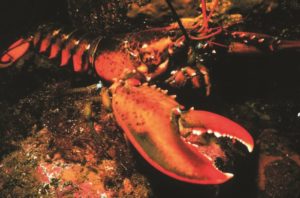It’s that time of year when the weather is not so hospitable for fishing and one by one the party and charter fishing, and whale watching crews shut down their operations and put the boats to bed for the long, cold winter. It happens quicker here on the Outer Cape than on the mainland because of the way we’re situated out in the ocean.
Every year at about this time, a few nice summerlike days bring about thoughts of an extended sport fishing season. But they’re quickly extinguished by howling northwest winds, large swells from offshore tropical storms, and cooler, shorter days. The bottom line is it’s just really difficult to extend the season on the Outer Cape. Most if not all the charter fishing boats will be done by next week. The Cee-Jay will be one of them, but we will stay in the water to service two cruise ships that are coming into port mid-October.
Fishing this year was much better than it has been for the last couple of years. Striped-bass fishing was outstanding, as the huge numbers of short bass we saw two years ago came back as keeper-size fish. And they stayed around, providing excellent fishing for most of the summer.
Bluefishing was hit or miss this year but mostly good. These fish, too, were much larger than the bluefish we’ve seen in the last few years. Mackerel were not in our bay all summer long the way they have been but instead stayed up on Stellwagen Bank. Fluke remained M.I.A. for the seventh straight year for reasons unknown.
Climate change continues to alter the landscape here in our waters as new species arrive and old reliable species thin out. Everything is seemingly moving from south to north.

Plenty of lobsters were caught this season, it seems, but the summer heat hasn’t stopped affecting our waters and lobstering in general. This summer, a water temperature of 68.8 degrees Fahrenheit was recorded in the northern section of the Gulf of Maine — a record.
According to the Gulf of Maine Research Institute, this year has been the fourth warmest summer on record overall, coming in behind 2021, 2012, and 2020. The presence of a thermocline, which is a boundary layer between warm surface waters and colder deeper waters, has kept things relatively good here on the Cape, but lobsters have fled nearby areas without that protective thermocline. In coastal waters south of Cape Cod, warming ocean temperatures have dramatically reduced lobster populations, leading to a collapse of some markets over the past decade.
According to data from the National Oceanic and Atmospheric Administration, registered lobster landings decreased by 97.7 percent in New York from 1996 to 2014. In Connecticut, lobster catches have fallen by 96.6 percent and in Rhode Island by 70.3 percent from their most profitable years. If you think of those data as a harbinger of what may come here in Massachusetts, the next state north, you might easily conclude the lobsters will continue to push deep and push north, seeking colder waters. We could be next to experience a lobster drought.
I’ve said it before and I’ll say it again: we will soon see tropical fish such as cobia, triggerfish, mahi, and wahoo being caught in Cape waters at the rate we are going. These fish are already not too far to our south.
Well, that’s a wrap for me reporting on the waterfront until next May. Be safe and stay warm.



